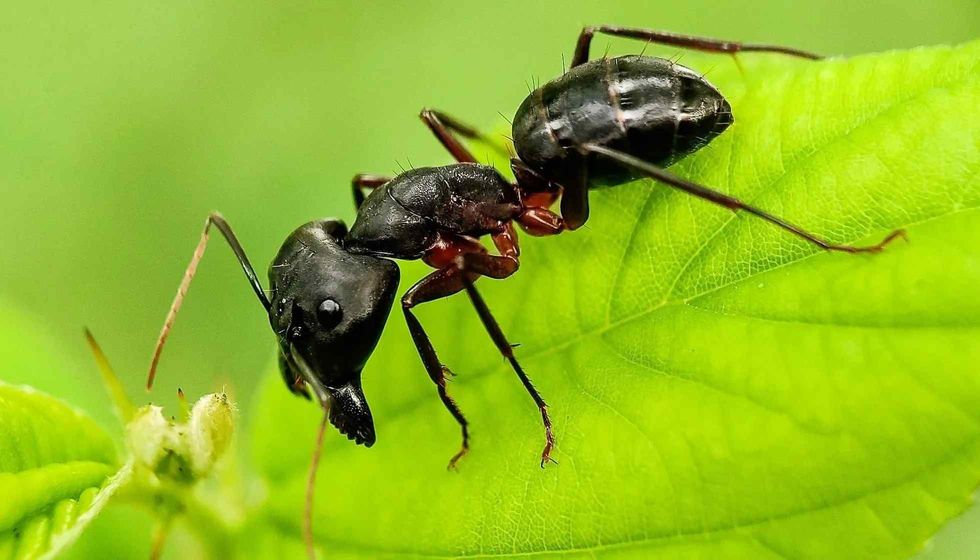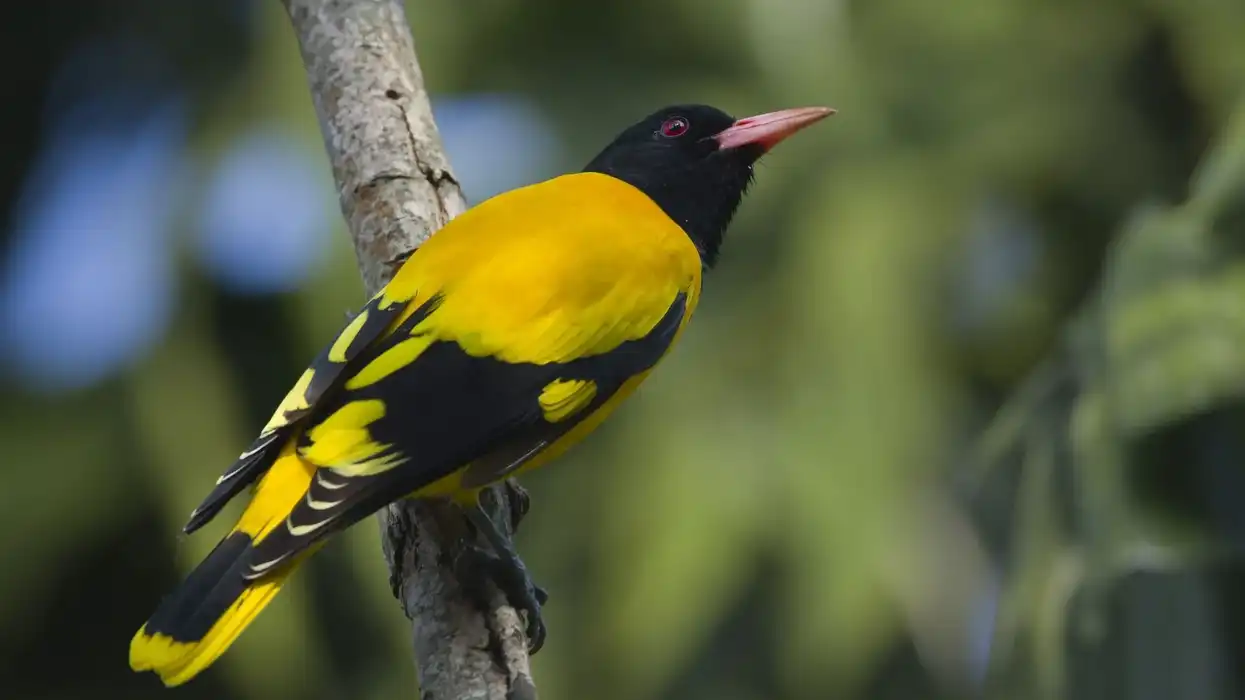Carpenter Ants, also known as worker ants, are primarily found in regions of North America. They are predominantly black and red. They can easily be spotted in the areas such as rocky mountains, woodlands, and tunnels.
These ants get their name from their building of nests in wood, where they form smooth tunnels inside the wood by excavating them, which is why they are also known as Wood Carpenter Ants.
The sites where their nests are built are often moist places of damaged wood and housing structures that are already under a lot of damage caused by other insects and termites.
Swarming is the process where these Carpenter Ants begin mating. After mating, it is known that male winged Carpenter Ants die, whereas the female ones shed their wings. The female winged Carpenter Ant is often searching for nesting sites.
The main colony of these ants usually consists of male workers, a carpenter queen, and its eggs. The queen lays around twenty eggs, and then it takes about two months for the eggs to turn into full-grown ants.
Their colony can be seen around places where these ants can quickly locate food. The primary food of these ants includes honeydew plants, fruit juices, insects, and arthropods. The workers help the queen in building their nests.
The presence of these ants could be detected by rustling sounds coming from gaps in the walls and wood. The only way to protect the house structure and wood from this pest is by taking the help of pest control. The moment you see these ants, one should contact a licensed pest control service.
Here on our page, we have lots of interesting facts on wolverine that everyone will enjoy. Let's have a look at these interesting facts and if you do like these, then do read our giant African millipede and click beetle.
Black Carpenter Ants Interesting Facts
What type of animal is a Black Carpenter Ant?
Black Carpenter Ants belong to one of the species of ants. Carpenter Ants are giant black and red ants that are very common in North America.
What class of animal does a Black Carpenter Ant belong to?
The class of animal that the Carpenter Ants belong to is insects.
How many Black Carpenter Ants are there in the world?
The exact number of many Carpenter Ants in the world cannot be given, however, a rough estimate can be given, and it is said that there are about 10,000-20,000 Carpenter Ants, with large colonies of more than 50,000 individuals.
Where do Black Carpenter Ants live?
Carpenter Ants are also known as worker ants, and they are found living in colonies with workers and a queen.
Carpenter Ants live in regions such as the Rocky Mountains, woodlands, forest edges, and suburban communities. They are also known as wood Carpenter Ants because they are often found to build their nests in moist and damaged wood and structures that are already under a lot of damage caused by other insects and termites.
Carpenter Ants nests are most of the time found in areas of damaged wood windows, chimneys, tunnels, sinks, doorframes, or bath traps and hollow spaces such as wall voids.
What is a Black Carpenter Ant's habitat?
Black Carpenter Ants are giant black and red ants that are very common in North America. They are found in most of the regions of North America.
Carpenter Ants live in areas such as the Rocky Mountains, woodlands, forest edges, and suburban communities.
They are also known as wood Carpenter Ants because they are often found to build their nests in moist and damaged wood and structures that are already under a lot of damage caused by other insects and termites.
The Carpenter ants' nest is found in broken wood windows, chimneys, sinks, doorframes, or bath traps, and hollow spaces such as wall gaps.
Who do Black Carpenter Ants live with?
Black Carpenter Ants are found living with species of their own kind in a well-formed colony. Most of the time, they are seen living in colonies with workers and a queen. They are also seen co-existing with the other species of ants as well.
How long do Black Carpenter Ants live?
The lifespan of a Carpenter Ant is estimated to be around 8-12 weeks for males, and females have been said to live for years.
How do they reproduce?
During the mating season, male winged Carpenter Ants mate with females. Right after mating, the male Carpenter Ants die, whereas the female ones shed their wings.
Then the female ants go on searching for their new nesting sites and start to build up their colonies. Usually, a carpenter queen ant lays around 20 eggs at a time, and then it takes approximately two months for the eggs to grow into full-grown worker ants.
What is their conservation status?
According to the International Union For Conservation Of Nature, the conservation status of Carpenter Ants has been declared as Least Concern (Not Extinct). They are completely free from threats of becoming extinct or vulnerable. Their overall population is not to be worried about.
Black Carpenter Ant Fun Facts
What do Black Carpenter Ants look like?
Black Carpenter Ants are large ants that are black and red in color. These pests are very similar to other species of ants. They have a segmented and oval-shaped body, with an exoskeleton structure. They are sometimes brown in color as well.
Female winged Carpenter Ants are usually bigger in size than male ants. Carpenter Ants are 0.25-0.98 in (0.64-2.5 cm) long in size. They are also said to have strong jaws.
How cute are they?
Whether Carpenter Ants are cute or not is subjective. They may be conceived to appear cute from a distance, but since they are considered to be pests, we doubt you'll find them to be cute from up close.
How do they communicate?
Carpenter Ants communicate by exchanging their oral fluid mouth to mouth. They also communicate via pheromones, sound, and touch.
How big is a Black Carpenter Ant?
Carpenter Ants are 0.25-0.98 in (0.64-2.5cm) long in size. Also, a Black Carpenter Ant with wings is 3.7 mm (0.15 in) long. This pest is two times bigger than a housefly.
How fast can Black Carpenter Ants move?
Carpenter Ants are fast-moving ants. An official measure of their speed, however, has not been recorded.
How much does a Black Carpenter Ant weigh?
Carpenter Ants weigh around one to five milligrams.
What are their male and female names of the species?
Male Carpenter Ants are called swarms, whereas female ants are called queens.
What would you call a baby Black Carpenter Ant?
Baby ants don't have any particular name.
What do they eat?
Carpenter Ants feed upon honeydew, plants, fruit juices, insects, and arthropods. These ants do not eat wood. These pests build their nests around places where they can quickly locate food. Their colony is usually around areas where they can get available food and favorable living conditions.
Are they harmful?
Carpenter Ants are generally not considered to be harmful as they mostly don't bite. Even if they do bite, a black Carpenter Ant bite is considered to be harmless.
Still, they are often categorized as a dangerous pest as they damage wood and the structural integrity of a house. A Carpenter Ant infestation is hazardous. Pest control is always needed to get rid of these pest ants.
Would they make a good pet?
Keeping in mind their required favorable environment and surroundings, one could say that they would not make a great pet as no one could provide them with the atmosphere that they like to live in. Since they are usually considered to be dangerous pests, they are not suitable to be petted.
Did you know...
Carpenter Ants can be fast ants.
These are larger than the black ants.
They build their nests in moist and damaged wood. The colony of these ants comprises workers, a carpenter queen, and eggs.
Black Carpenter Ant infestations
Black Home Carpenter Ants enter houses usually in search of food and build up their nests to multiply their colony size. These pests typically don't eat wood where they build up their nest, but they are known to spoil furniture and the wood of a house. Pest control is the only way to get rid of Carpenter Ant infestation.
Carpenter Ant vs. Black Ant
Carpenter Ants are usually larger than black ants. The thorax of Carpenter Ants is very smooth and rounded, whereas for black ants it is uneven.
Here at Kidadl, we have carefully created lots of interesting family-friendly animal facts for everyone to discover! Learn more about some other arthropods, including wolf spider or atlas beetle.
You can even occupy yourself at home by drawing one on our Black Carpenter coloring pages.










